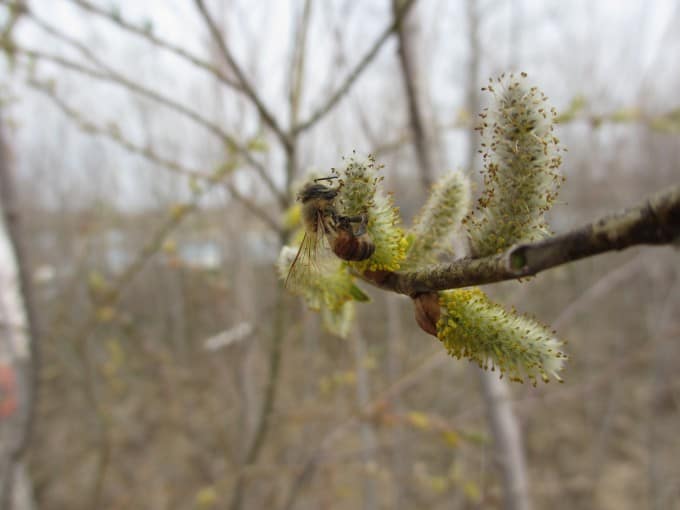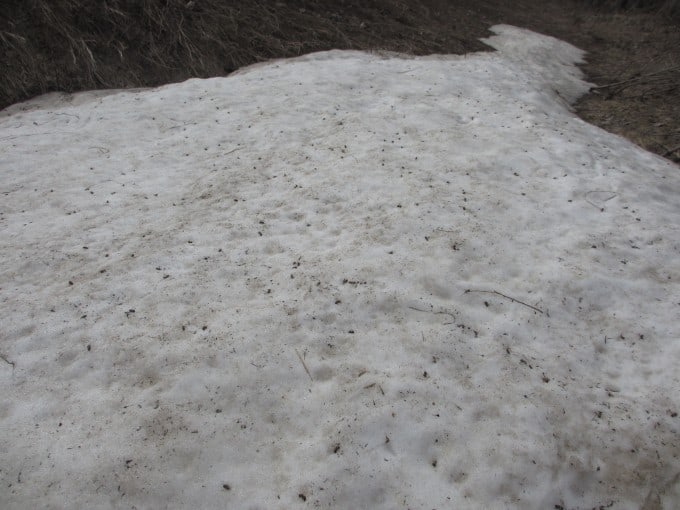On May 7, a beekeeper in Minnesota noticed his bees were dying. I went to the beekeeper’s location a few days later and saw all the below symptoms and took samples for the beekeeper. There were bees on the ground with their legs up and twitching. There were bees that, when placed on their backs, couldn’t right themselves. There were bees on willow blossoms (the first blooming plant of the year) that should have been actively collecting pollen, but would barely lift a leg when poked or were dead. There were dead bees all over one of the few remaining snow patches and in front of the colonies. Inside the hive, the colonies looked a bit depopulated for the amount of brood and stores. There was some fresh pollen being brought in from the willows, but I didn’t see any conclusive evidence that the brood was affected.
One of the many twitching bees.
So what caused this? It is unlikely that it was a disease or pest since colonies show symptoms at different times depending on factors such as the initial inoculation or degree of susceptibility to the specific disease, and it looked like the colonies were all affected at the same time. Plus, I don’t know of any disease or pest that would cause this aggregate and severity of symptoms. Something was affecting the bee’s movement and killing them. With the number of dead and affected bees, and from my field experience, it looked like an acute pesticide kill.
The beekeeper’s theory on why the bees were dying was that when the corn fields right next to the bee yard were being planted with corn seed coated with a neonicotinoid pesticide, the high winds blew the dust onto the willow blossoms and the bees. It is possible the bees then became exposed to the pesticide through eating the dust on the willow blossoms or by trying to groom the dust off. This theory is not unique: beekeepers in Ontario experienced losses of bees during corn planting last year, researchers documented bee losses in Indiana in 2010 and 2011, and Bayer CropScience is working on reducing the dust exposure to bees during planting.
About a week later, a second beekeeper in Minnesota reported similar issues with his bees in a yard located near cornfields that were recently planted.
In both cases, representatives from both the MN Department of Agriculture and Bayer visited the beekeepers and took pesticide samples. I went to the first case as an impartial BIP bee person, and a coworker went to the second case. At both beekeepers, we colony assessments and took samples for Varroa, Nosema, and viruses. The cause of the bee deaths at the two beekeeper operations is not yet officially confirmed. We are waiting to hear the results of the sampling. Stay tuned.


